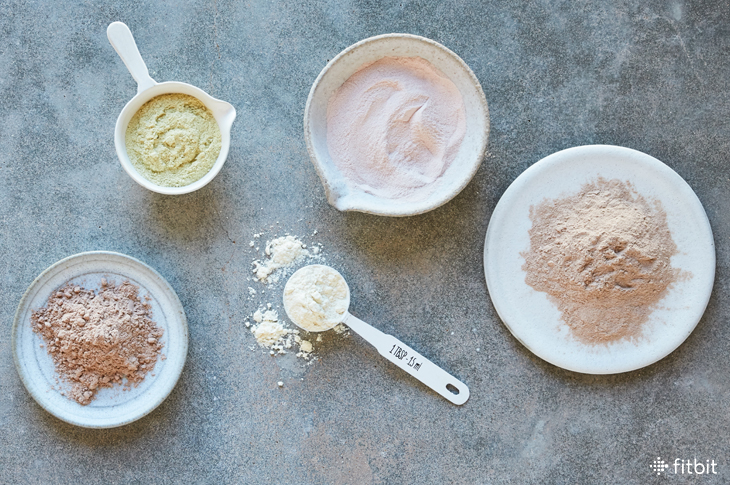
Yes, your body absolutely needs protein. Especially if you’re stepping it up with your workouts, you want to make sure you’re getting the right amount throughout the day. But you can get plenty of protein from whole foods, so hold up before you start scooping powders and blending.
What’s Actually in Protein Powder?
Protein powders are processed foods, made from lots of different ingredients. In their simplest form, they come from milk (whey is a by-product) or egg whites. But vegan and plant-based options also exist, derived from soy, hemp, peas, and more. Protein powders can also contain added sugars, artificial sweeteners and flavors, probiotics, vitamins, and minerals—even additives like caffeine or creatine. So some powders are more processed than others, and some are better for you than others.
Do You Really Need Protein Powder?
The short answer: no. You can easily get the protein you need from natural sources, such as eggs, chicken breast, fish, beans, milk, cottage cheese, nuts, seeds, and whole grains. Athletes rely on protein powder because they typically need more protein, plus it’s convenient. In general, athletes need anywhere from 0.54 to 0.91 grams per pound of body weight every day, and carefully time that before and after workouts, to maximize muscle recovery and growth. For instance, if you’re running 25 to 30 miles per week, you might want to chase tough workouts with 20 grams of protein, along with some carbs. That could be 1 cup of plain Greek yogurt with berries and whole-grain cereal, or 2 scrambled eggs with a whole-wheat English muffin and a piece of fruit. But when you’re busy, it’s easy to grab a shake or a bar. Just remember: it’s never a good idea to take supplements you don’t need, and you don’t want to let extra protein turn into excess calories.
Make sense? Still want to use one? Here’s what you need to know if you choose to include a protein powder in your diet.
How to Pick a Protein Powder
First, check that the powder is certified by a third party, such as NSF Certified for Sport. The U.S. Food and Drug Administration (FDA) does not regulate supplements, and that includes protein powders. In one review, 4 out of 14 protein products failed the quality-assurance test, due to certain products containing cholesterol when none was listed, 50 percent higher sodium than what was listed, and being contaminated with cadmium, a heavy metal that in high amounts may damage the kidneys. A certificate from a third party is your only reassurance that the product has been tested and actually contains what’s listed on the package.
Next, glance at the ingredients list. Some protein powders contain a dozen-plus ingredients, and can be sweetened with sugar or sugar alcohols (which may cause tummy problems). Although they’re not always as easy to find, your best bet is to look for a protein powder made entirely of the protein source—whether that’s whey, egg whites, hemp, peanut butter, or something else.
Finally, consider serving sizes, which aren’t always comparable. One serving of protein powder can range from about an ounce to close to double that amount. So if you want to accurately compare the amount of protein, sugar, and other nutrients in multiple products, you’ll need to do a little math first!
And remember, while many protein powders boast 20 grams or more of protein per serving, more isn’t necessarily better—all your muscles need is 0.1 gram per pound body weight or 20 to 40 grams at a time. And you can easily get the same amount of protein from whole foods and healthy recipes. Doesn’t a Chocolate & Peanut Butter Protein Shake, featuring Greek yogurt and peanut butter as protein sources, sound more delicious?
The post Do You Really Need Protein Powder? appeared first on Fitbit Blog.
Source: Fitbit Blog
—